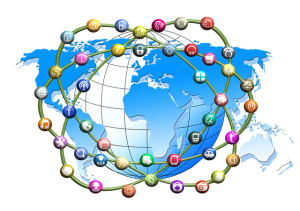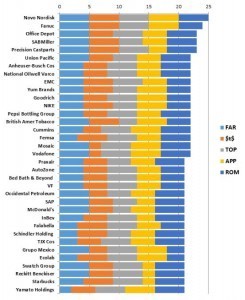Vivek Sood's Blog, page 49
November 10, 2014
What Makes the Business Networks Great?
What Makes Business Networks Great?
Extract from the book “The 5-Star Business Network”, written by Vivek Sood
 In 2012, when Facebook’s IPO was being discussed in the media, a range of valuations was put forward by the experts between approximately $50 and more than $100 Billion. Most people in traditional businesses were stunned and asked how could a company with no products, no factories, no customers and no suppliers, be valued more than Siemens, Nokia, US Steel, or even a combination of these traditional, well respected companies. The pundits declared the basis of valuation as the Network Effect and left it at that – leaving people to decipher what exactly the Network Effect is and exactly how does it lead to a valuation of tens of billions of dollars.
In 2012, when Facebook’s IPO was being discussed in the media, a range of valuations was put forward by the experts between approximately $50 and more than $100 Billion. Most people in traditional businesses were stunned and asked how could a company with no products, no factories, no customers and no suppliers, be valued more than Siemens, Nokia, US Steel, or even a combination of these traditional, well respected companies. The pundits declared the basis of valuation as the Network Effect and left it at that – leaving people to decipher what exactly the Network Effect is and exactly how does it lead to a valuation of tens of billions of dollars.
(…)
Networks, of course, can be homogeneous groups of similar people, such as net-savvy, with spare time and willingness to share their lives’ details with others on Facebook (or similar social websites), or they can be heterogeneous networks of a multitude of suppliers around the world that provide a vast range of components and parts, such as those that go into manufacturing the Airbus A380. Networks can even be a combination of homogeneous entities and heterogeneous groups, or vice versa. This point should emphasise in the readers’ minds that there is not one single kind of network, and hence the characteristics will vary accordingly.
The Network Effect
Needless to say, there is no point spending time on a social network website if you are the only person who ever visits it. In fact, if most of your friends are members of a rival social networking site, you would eventually find yourself there, or find yourself a web outcast. This leads to a catch-22. Most nightclub and restaurant owners are long familiar with the predicament – the more popular your establishment becomes, the more people want to get into it. However, the key predicament is always – how to start off the process. An excellent book “The Tipping Point”, by Malcolm Gladwell, discusses this phenomenon in great detail and attributes it to the three rules – getting the first movers (law of the few – the mavens, the connectors and the salesmen), the stickiness factor (simple ways to make things memorable) and the power of context (small factors in the environment and the relationships that create and sustain impetus). If you have not yet read the book “The 5-Star Business Network”, I highly recommend it. It is neither advisable, nor possible, to paraphrase the excellent content, and Gladwell’s writing style is extraordinarily eloquent.
So, with every new addition to a network, it becomes a little bit more valuable. This continues to happen until the network reaches a tipping point, a point at which it suddenly becomes a lot more valuable. After this point, the network will generally race past all its rivals and become a de facto standard in its realm. Whether it is a question of which social network website to frequent, or which type of keyboard to use as a standard (the more popular QWERTY or the more efficient Dvorak style), or which type of cooling systems to use in the nuclear power plants (light water, heavy water or gas cooled) – the decision almost always rests on the network effect.
(…)
Conclusion
Networks thrive on trust: they succeed where trust building mechanisms are strong and well adhered to. Well functioning business networks incorporate a secret source – the power that goes beyond the synergy, the multiplier effect, into the realms of synchronicity. Besides, business networks allow businesses to be simultaneously strong in their core strengths and live with their own weaknesses – the other members of their business networks make up for their weaknesses. As businesses move from traditional structure to business networks, the essential co-operation building mechanism moves from control to co-ordinate to co-create.
Read more on The 5-Star Business Network
The post What Makes the Business Networks Great? appeared first on Global Supply Chain Group | Management And Strategy Consultants.
November 6, 2014
Open secrets from Ancient Network
Extract from the book “The 5-Star Business Network”, written by Vivek Sood
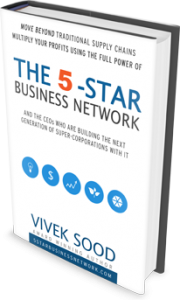 “Plus ça change, plus c’est la même chose”
“Plus ça change, plus c’est la même chose”
Alphonse KARR, Les Guêpes 1849
Before we embark on the journey of exploration into the current realms of business networks, let us take a journey into the past. A logical question always is whether all this is new or has this been done before. After all, as the quotation above says, the more things change the more they remain the same. This is true of the business networks too.
In a way, the networks we are talking about in this book are not new at all. Some features, such as speed, trust building mechanisms, outcomes and science of network creation and harnessing are new. However, similar networks have existed in formally or informally through the ages. And each time, they have been very effective in creating value for the participants, business community, and society in general. In this chapter, let us briefly visit some of these networks through the centuries and see what we can learn from them. History is our best teacher.
At this point it is appropriate to note that we will keep these discussions of historical business networks brief, neutral and non-controversial. The reason, besides efficiency, is that our objective is not a detailed study of characteristics, pros and cons, or even moral rectitude of the participants. Rather, it is more mundane exercise in finding parallels with the current business networks and their key characteristics.
The silk route – a vast ancient business network
 Without going too far back into the antiquity, let us start our journey at the silk route of the Middle Ages. At its peak, the silk route extended nearly 4000 miles from the coast of China through the territories of China, Central Asia, India, Persia and Assyria to the Mediterranean coast of Levant and onwards by sea to the fabled city of Venice and beyond. The term silk road creates an image of a road, perhaps even a boulevard traversed by a camel train laden with expensive cargoes and well protected by security. The truth is, however, is far more complex. In reality it was a complex network of caravans, camel trains, serais, traders, money lenders and ships extended across the known world of the time to carry merchandise as diverse as silk, spices, wool, fabrics, tea, porcelain, carpets, ivory and other such items of high value. Each of the main cities in this network – Kashgar, Samarkand, Turfan, Baghdad, Tyre, Allepo or Alexandria – was a veritable hub of activities related to trade facilitation. The participants in this network – whether a Sugd merchant, or a Chinese caravan owner, or a Florentine ship captain – were handsomely rewarded for their enterprise and ability to work their part in harnessing the power of the network.
Without going too far back into the antiquity, let us start our journey at the silk route of the Middle Ages. At its peak, the silk route extended nearly 4000 miles from the coast of China through the territories of China, Central Asia, India, Persia and Assyria to the Mediterranean coast of Levant and onwards by sea to the fabled city of Venice and beyond. The term silk road creates an image of a road, perhaps even a boulevard traversed by a camel train laden with expensive cargoes and well protected by security. The truth is, however, is far more complex. In reality it was a complex network of caravans, camel trains, serais, traders, money lenders and ships extended across the known world of the time to carry merchandise as diverse as silk, spices, wool, fabrics, tea, porcelain, carpets, ivory and other such items of high value. Each of the main cities in this network – Kashgar, Samarkand, Turfan, Baghdad, Tyre, Allepo or Alexandria – was a veritable hub of activities related to trade facilitation. The participants in this network – whether a Sugd merchant, or a Chinese caravan owner, or a Florentine ship captain – were handsomely rewarded for their enterprise and ability to work their part in harnessing the power of the network.
 Let us look at how the network was organised in practice. In the agrarian society of the Middle Ages, the most precious commodity traded by the business network was the spices. Before the advent of refrigeration, spices were necessary to preserve food as well as mask the flavor of spoilt or rancid ingredient. Many spices such as pepper, cloves, mace and cumin, ginger, nutmeg, cinnamon and saffron traded for margins up to 3000 percent and some of these were regularly sold for prices more than their weight in gold. With such high margins, demand was never a constraint, the extent and security of the supply route was. It was usual for the goods to change ownership more than 25 times between the producers in the east and the eventual consumer in the west. Each middleman added his own margin as well as embellishment to the story. For example, Arab merchants told their European buyers that the cloves were netted out of river Nile and cinnamon came from the birds.
Let us look at how the network was organised in practice. In the agrarian society of the Middle Ages, the most precious commodity traded by the business network was the spices. Before the advent of refrigeration, spices were necessary to preserve food as well as mask the flavor of spoilt or rancid ingredient. Many spices such as pepper, cloves, mace and cumin, ginger, nutmeg, cinnamon and saffron traded for margins up to 3000 percent and some of these were regularly sold for prices more than their weight in gold. With such high margins, demand was never a constraint, the extent and security of the supply route was. It was usual for the goods to change ownership more than 25 times between the producers in the east and the eventual consumer in the west. Each middleman added his own margin as well as embellishment to the story. For example, Arab merchants told their European buyers that the cloves were netted out of river Nile and cinnamon came from the birds.
Without any central command, the entire network was organized towards one end – production, collection and transportation of the spices and similar produce to the destinations in Europe. Numerous middlemen – camel caravan owners, merchants, ship owners, and financiers participated in this chain – each within their own territory and with their own margin. It is estimated that the middlemen’s share of the profit in this enterprise was more than 90 percent.
Read more on The 5-Star Business Network
The post Open secrets from Ancient Network appeared first on Global Supply Chain Group | Management And Strategy Consultants.
November 3, 2014
Why Business Networks Are Important?
Extract from the book “The 5-Star Business Network”, written by Vivek Sood
Why Business Networks Are Important?
 There was a time, not more than a few decades ago, if you were General Motors you would attempt to own every part of your business. The assembly lines, the parts manufacturing plants, the stamping units, the ancillary units and even the software that runs the business, the dealerships that sold the cars, the steel mills, even the mines that produce iron ore for the mills. This was for good reason – you either could not trust others to be savvy enough to produce and send you the material you wanted when you wanted it, or the margins in each of those businesses were big enough for you to try and own all those operations.
There was a time, not more than a few decades ago, if you were General Motors you would attempt to own every part of your business. The assembly lines, the parts manufacturing plants, the stamping units, the ancillary units and even the software that runs the business, the dealerships that sold the cars, the steel mills, even the mines that produce iron ore for the mills. This was for good reason – you either could not trust others to be savvy enough to produce and send you the material you wanted when you wanted it, or the margins in each of those businesses were big enough for you to try and own all those operations.
There was only one thing wrong with this structure. Your business became an insular behemoth – far removed from the customers and moving slowly in a marketplace going through a rapid transformation. Your more nimble competitors, with loose networks of aligned companies, could easily run rings around you in no time – both in terms of developing and launching new products, and producing and selling high quality products at lower prices.
Business Networks are more important than your business infrastructure
Eventually, realising the truism inherent in the folk wisdom of farmers when they say that you do not have to own the cow if all you want is the milk, you would investigate ways of carving out parts of your business into independent entities that could be run as loosely aligned network of businesses, similar to what your competitors had evolved into. This is not a book extolling the virtues of Keiretsu, chaebols or similarly exotic-sounding Japanese and other Asian business structures. It is, however, useful to take some lessons from the evolution and success of these business networks.
Over the past several decades, both the global economy, as well as business structures have evolved dramatically to such an extent most businesses have no recourse but to create business networks akin to those mentioned above (notify on the book). So what is the magic of these business networks? Why are they so important? What makes one business network better than another? Is there a way to systematically assess, measure, report upon, improve and monitor the quality of your business network? What outcomes should you expect out of a well-tuned business network? These are some of the questions we will answer in this book.
Business Networks make your business more resilient and responsive
 When the Tsunami flooded the eastern coastal stretch of Japan in March 2011, the ensuing nuclear disaster combined with the devastation caused by the ocean to disrupt businesses around the world. The Japanese economy sits right in the middle of the global business network and it was natural for businesses as diverse as auto manufacturing, electronics, chemicals, petroleum products, computers and metals to experience the disruptive shock. For example, the price of the Toyota Prius went up by nearly $2,400 after rumours of shortages. While it is natural for a variety of businesses to experience the disruption, it was remarkable to note that those, which had the most responsive and resilient business networks, were the ones to recover from this catastrophe the quickest. Later on in this book, we will see how to recognize the quality of business networks and make them more resilient and responsive at the same time.
When the Tsunami flooded the eastern coastal stretch of Japan in March 2011, the ensuing nuclear disaster combined with the devastation caused by the ocean to disrupt businesses around the world. The Japanese economy sits right in the middle of the global business network and it was natural for businesses as diverse as auto manufacturing, electronics, chemicals, petroleum products, computers and metals to experience the disruptive shock. For example, the price of the Toyota Prius went up by nearly $2,400 after rumours of shortages. While it is natural for a variety of businesses to experience the disruption, it was remarkable to note that those, which had the most responsive and resilient business networks, were the ones to recover from this catastrophe the quickest. Later on in this book, we will see how to recognize the quality of business networks and make them more resilient and responsive at the same time.
Read more on The 5-Star Business Network
The post Why Business Networks Are Important? appeared first on Global Supply Chain Group | Management And Strategy Consultants.
October 27, 2014
Fire-Aim-Ready Innovation (FAR) – For Efficient Product Development
This article is an extract from The Five Star Business Network, written by Vivek Sood
“It’s really hard to design products by focus groups. A lot of times, people don’t know what they want until you show it to them.”
Steve Jobs (1955 – 2011), Business Week, May 25 1998
“In most people’s vocabularies, design means veneer. It’s interior decorating. It’s the fabric of the curtains of the sofa. But to me, nothing could be further from the meaning of design. Design is the fundamental soul of a human-made creation that ends up expressing itself in successive outer layers of the product or service.”
Steve Jobs (1955 – 2011)
When Apple first launched its iPod music players in November 2001, no one had an inkling what it would lead to in a decade’s time. The first salvo that Apple fired in what eventually became a market domination of the mobile phone market, did not look like a mobile phone at all.
 Indeed, none of the mobile phone players – whether market leaders such as Nokia or Ericcson or followers such as Samsung, Siemens, LG, and many others – displayed any sign of discomfort at the launch of iPod. The entire battle of iPod and iTunes was fought on the turf of the music industry’s drive to save itself from $0.99 per tune pricing policy of Apple.
Indeed, none of the mobile phone players – whether market leaders such as Nokia or Ericcson or followers such as Samsung, Siemens, LG, and many others – displayed any sign of discomfort at the launch of iPod. The entire battle of iPod and iTunes was fought on the turf of the music industry’s drive to save itself from $0.99 per tune pricing policy of Apple.
Fire-Aim-Ready Innovations keeps your competitors guessing your intentions
Ironically, an industry which was half decimated by music piracy was busily fighting the very network which could save it – while the industry that would eventually be decimated was cheering on.
When the iPod first came out, all the competing products in the market were clunky, large and erratic in their functioning. Transferring music files from CDs to computer to digital music devices was a major task, and piracy and peer-to-peer sharing was rife on the internet. Many observers doubted the wisdom of selling tracks on iTunes when they were freely downloadable on the internet.
With its white headphones, small form factor, easy to use interface, user friendly computer link to both Mac and Windows, iPod quickly became an epitome of ‘cool’ from 2001-2006. As successive versions of iPod were issued (we will cover version update in much more detail in Advanced Product Phasing) newer features, more capacity, updated iTunes software for computers were introduced luring the customers to buy many more versions of iPod. Newer products in the same genre – iPod mini, iPod Nano, iPod shuffle, iPod Touch – were introduced to further capture the market, each with its own round of successive generations.
Each step in the Fire-Aim-Ready Innovation generates multiple platforms for future innovation
Apple was making huge inroads into the hearts and minds of the customers – especially non-Mac users who had no previous experience with the iconic brand. At the same time it was gaining expertise, knowledge and experience in small portable gadgets learning how consumers interacted with these, learning what the missing pieces in the existing gadgets and most were importantly building key connections with the network of suppliers, developers and other network participants who would eventually make the iPhone a resounding success.
Meanwhile, smart phones were becoming popular with consumers and Blackberries with the corporate markets. When Apple fired its second salvo in the battle for mobile phones, it was still not fully ready in the traditional sense. For example, most corporate IT barons scoffed at the idea of using iPhones for corporate emails and networks because of the missing security features. Even the cameras on the first version were far more basic than those on the other smart phones on the market at that time. However, the first iPhone was still an outstanding success which can be attributes to its massive consumer following from iPods, its ‘cool’ advertising, far superior user experience, reputation for delivering on its promise, and a number of sticky and unique features which were marketed very well.
 Behind the scenes, Apple had already assembled an outstanding network of suppliers ranging from Foxxcon – the Chinese assembler to Fingerworks – the developer of the then unique touch screen software to the ARM the licenser of the CPU. Working closely in a huddle with these suppliers, who were each sworn to secrecy, Apple retained its leadership position in product development time compared to its competitors by outpacing them significantly, while at the same time raising the product quality to level that leapfrogs the competitors. Its innovations were truly disruptive in the industry, even though it always leapfrogged the competitors rather than take the low road to disruption as suggested by Clayton Christensen in his theory. The disruption in the industry is evident from the fact the RIM – the maker of Blackberry – is now on the ropes unsure of its own financial future.
Behind the scenes, Apple had already assembled an outstanding network of suppliers ranging from Foxxcon – the Chinese assembler to Fingerworks – the developer of the then unique touch screen software to the ARM the licenser of the CPU. Working closely in a huddle with these suppliers, who were each sworn to secrecy, Apple retained its leadership position in product development time compared to its competitors by outpacing them significantly, while at the same time raising the product quality to level that leapfrogs the competitors. Its innovations were truly disruptive in the industry, even though it always leapfrogged the competitors rather than take the low road to disruption as suggested by Clayton Christensen in his theory. The disruption in the industry is evident from the fact the RIM – the maker of Blackberry – is now on the ropes unsure of its own financial future.
If this article interested you, you can read more on the book
“Vivek Sood is the world’s foremost authority on Global Supply Chains which are the commercial engines sitting deep within modern economies and driving them. He is a Chartered Financial Analyst (CFA), and has done courses from Harvard, MIT, and University of London. As the Managing Director of Global Supply Chain Group, he works as a consultant to CEOs and boards of directors of large global corporations, and helps them multiply profits by using the full power of global supply networks. He is also the author of “The 5-STAR Business Network”
The post Fire-Aim-Ready Innovation (FAR) – For Efficient Product Development appeared first on Global Supply Chain Group | Management And Strategy Consultants.
October 21, 2014
Why Business Networks Are Important?
Business Networks are important. As what Jane Howard, “Call it a clan, call it a network, call it a tribe, call it a family. Whatever you call it, whoever you are, you need one.”
It is useful to take some lessons from the evolution and success of business networks. Business structures have evolved radically to such degree that now most businesses have no option but to create business networks.
Business Networks are more important than your business infrastructure
Naturally your business infrastructure is fixed, rigid and cost accruing. Your business network, on the other hand, is evolutionary, flexible and revenue accruing.
Business Networks make your business more resilient and responsive – at the same time.
Those businesses which had the most responsive and resilient business networks were the ones to recover from any downfall the quickest.
When Cash is the King – Business Networks Triumph
Data is visibly conclusive that in times of cash crisis, the quality of their business networks saves the companies. The companies with more robust business networks have far superior cash conversion cycle. Business network masters improve their cash to cash cycle leading up to the Global Financial Crisis.
In boom times Business Networks Give You Speed
Even relatively smaller businesses can achieve remarkable results quickly based on the responsiveness of their business networks. In economic booms, whether accompanied by economic volatility, or economic stability, business networks allow you to realize higher profits, quickly. The potential of your company’s capabilities are multiplied many times over, by the leverage effect provided by your business network. This is only possible through extensive utilization of business networks that the company built, nurtured and managed effectively. Most executives grossly under-estimate the value and efficacy of the business networks in ramping up capacity rapidly in times of boom.
Business Networks Help Smooth out the Volatility
Especially during the times of extreme volatility. No wonder we see airlines and shipping companies forming global service alliances to ride out the season and economic peaks and troughs. In such a volatile business environment, budgeting and planning can become a nerve-racking exercise for all the companies except those which use their business networks to cushion the lean periods with long term contracts and find scarce capacity during the boom periods. Supply chain is unique to every company and industry, formulated over a number of decades in many cases, and is worth several trillions of dollars in value.
Valuation of Business Networks is Astronomical, Though Difficult to Quantify
Estimates range into trillions of dollars, and yet may be underestimating the full extent and power of these hidden business resources. The magic of business networks has made it possible to design, build, launch and sell revolutionary products in less than one-third time of the industry.
If you cannot make your business networks more visible and manage them more proactively, you may be silently yielding the competitive advantage to others who can. The magic of business networks has made it possible to design, build, launch and sell revolutionary products in less than one-third time of the industry.
The post Why Business Networks Are Important? appeared first on Global Supply Chain Group | Management And Strategy Consultants.
October 19, 2014
Finally, An Innovation from Apple That is Worthy of Steve Jobs’ Name
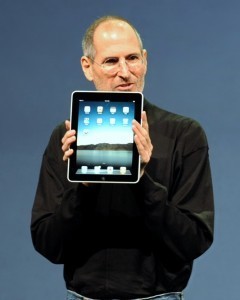 The Apple watch left me underwhelmed as did the plethora of me-too tablets and phones which are barely struggling to keep up with the ever more nimble competition. I wrote a blog about the Apple Watch here wondering whether the company had lost its mojo.
The Apple watch left me underwhelmed as did the plethora of me-too tablets and phones which are barely struggling to keep up with the ever more nimble competition. I wrote a blog about the Apple Watch here wondering whether the company had lost its mojo.
When I found out about Apple SIM, having written a book on The 5-STAR Business Networks, I suddenly realized the true potential of this great leap forward by Apple. Obviously, there are more than several ways to skin the cat.
While everyone was looking for the next innovative product, that Apple has produced every few years in the past, what slipped our attention was the innovative service which will make Apple tablets so much easier to use – especially by its target, high end market.
If do not know much about Apple SIM – you are not alone. In fact there was not a tweak about it in the usual Apple staged events where the Apple Watch and other new gizmos were introduced. The service (product) was launched quietly as one of the embedded features in the new generation Apple tablets.
So what is Apple SIM?
As per Apple:
The new Apple SIM is preinstalled on iPad Air 2 with Wi-Fi + Cellular models. The Apple SIM gives you the flexibility to choose from a variety of short-term plans from select carriers in the U.S. and UK right on your iPad. So whenever you need it, you can choose the plan that works best for you — with no long-term commitments. And when you travel, you may also be able to choose a data plan from a local carrier for the duration of your trip.
Clearly, if you are a frequent business traveler, this service will fulfil your CFO’s dream. The international roaming charges are so high that in most cases you have to mostly restrict your time on line to when a WiFi network is in reach.
Is this a big deal?
From the customer’s point of view, their ability to be online wherever they are is necessary for using all cloud based applications including emails and messaging systems. If it costs an arm and a leg, as it currently does, customers will grudgingly put up and restrict usage to a bare minimum – while trying to find work-arounds.
Some companies, such as Vodafone or Globalgig do provide similar services so this is not a new offering. Yet, I would characterize the state of the play as akin to the digital music players market before the original, cute looking iPods came along and made all the rest look like clunky dinosaurs.
I must admit, I have not used the Apple SIM yet, because of its current limited ability. Nonetheless, I have used many of its competitors’ and I can attest to the fact that their services work with a lot of clumsiness. Thus, therein lies the opportunity, and challenge, for Apple.
If Apple can make the service as user-friendly and seamless as the rest of its offerings, it will win big in the next tablet war. Well, at least till Samsung and Google figure out a way to beat Apple in this new business network game.
Related articles
 Here’s How Apple Might Be Able To Justify Charging $10,000 For A Top-Of-The-Line Apple Watch (AAPL)
Here’s How Apple Might Be Able To Justify Charging $10,000 For A Top-Of-The-Line Apple Watch (AAPL) How Apple’s fall event affects my digital strategy for the next 12 months
How Apple’s fall event affects my digital strategy for the next 12 months SIM : Apple’s ‘knockout’ feature
SIM : Apple’s ‘knockout’ featureThe post appeared first on Global Supply Chain Group | Management And Strategy Consultants.
September 26, 2014
These Global Business Network Winners Know – ‘The Game Has Changed Again.’
Author: Vivek Sood
When I explain to people that supply chain 3.0 is real, in general, I get three type of responses. Most of the McKinsey (or their clone) trained strategists ask me to show data to back up this assertion. On the other hand, more intuitive executives (mainly from sales and marketing background, as I observe) ask me to explain the benefits of supply chain 3.0. Finally, the third group – those who I call the transformational leaders ask a simple question – how can we use the power of supply chain 3.0 in effecting beneficial business transformations.
In this blog I will address the first question. I will leave for later blogs the remaining two questions and other arising questions such as: how does supply chain 3.0 differ from the previous versions of supply chains, and, why it was even necessary to ‘invent’ supply chains in the first place.
It is an important question – “where is the data to clearly demonstrate that Supply Chain 3.0 is real?” The data driven crowd has a legitimate concern lest a couple of isolated examples be seen as heralding a trend. Having trained at a similar top-tier consulting house during my formative years in consulting, I fully understand and endorse their questions.
Why?
Because all of us have seen people taking isolated instances and exceptions and making them so big in their own and others’ perceptions that these appear to be the predominant trends. Nay-sayers will take a few stray instances of setbacks, blow them out proportion to support their naysaying. On the other hand, almost all investment projects also have their share of overly optimistic projectionists.
In the end, only data reveals the overall picture and clarifies the confusion.
For this reason, when I wrote the book “The 5-STAR Business Network“, our team did a 6 year longitudinal study of the top 1200 corporations around the world. There were other reasons why this study was conducted – which are given in Chapter 14 of the book.
The full research methodology and the resulting ranking of the companies is also given in the book, but for our purpose here it is interesting to note that 62 companies out of the entire starting sample of the top 1200 companies in the world scored 20 points out of 25, which is our cut-off for the Supply Chain 3.0.
Also, interesting to note is that Apple – the darling of supply chain crowd – is only ranked #60 in the rankings. And, due to its low margins, Amazon – just missed the cut.
So who are the top 35 companies in these rankings? You can see them in figure 1 below. For the time being ignore the 5 colour coding, as well as funny three-letter acronyms (TLAs) in the figure.
I am absolutely sure, that this figure is unlike any other figure you might have seen before.
Firstly, the companies themselves come from around the globe – Novo Nordisk is from Denmark while Fanuc is from Japan and Falabella is from Chile. That was to be expected – if you make your research wide and deep enough you will find good companies everywhere. No country, or continent has monopoly on excellence. So much for all the hype about the Asian century.
Sure, development in Asia is creating unprecedented opportunities – but good companies around the globe are using that trend to their benefit. You do not need to be an Asian company to be excellent, but neither are all non-Asian companies uniformly good.
Figure 1: Top 35 companies out of the 62 companies with Supply Chain 3.0
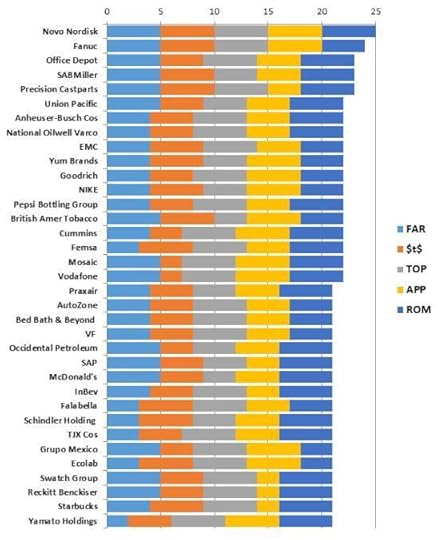
Secondly, because this ranking is based on study conducted over 5 years (not at a single point in time) the standards of excellence are much higher. Also, this is a global study hence the sample base was much wider. For this reason many of the usual suspects that you might have seen elsewhere in magic circles etc. are missing.
Another reason, the usual suspects might be missing is because we looked far beyond tactical operations into the strategic contribution of supply chains to corporate results.
For example, rarely has anyone tried to gauge the impact of supply chain collaboration on innovation, new product development, pipeline of products, product phasing etc. But in our research, we took these into account. For details of the research methodology, caveats, cautions and warnings about not applying these results for investment decision making please read Chapter 14 of the book “The 5-STAR Business Network“.
This is critical because I do not want you to take the results out of context and make decision based on flawed assumptions.
Time has come to talk about the 5 funny acronyms in the figure. This is because we want to see how these are linked to the strategic contribution of supply chain management to overall corporate results.
So, what do these TLAs stand for? Figure 2 below shows the details:
Figure 2: Five cornerstones of Supply Chain 3.0

Each of these names are quite self-explanatory and most people reading this blog will not need too much explanation. I will only briefly outline them here, because detailed explanation and examples mean that I will be recreating the book “The 5-STAR Business Network” or a version of it in this blog.
One more important conclusion needs to be drawn from the data presented in Figure 1. You will notice that rarely is there a company which ranks high on each of the five key cornerstones of supply chain 3.0. Yet, all the 62 excellent companies that meet our criteria for supply chain 3.0 excel in at least three of the five key cornerstones.
That shows you do not have to perfect to arrive at supply chain 3.0 – you only need spikes of excellence in at least three of the five key areas.
In the next two entries, I will write about each of these five pillars in more details.
“Vivek Sood is the world’s foremost authority on Global Supply Chains which are the commercial engines sitting deep within modern economies and driving them. He is a Chartered Financial Analyst (CFA), and has done courses from Harvard, MIT, and University of London. As the Managing Director of Global Supply Chain Group, he works as a consultant to CEOs and boards of directors of large global corporations, and helps them multiply profits by using the full power of global supply networks. He is also the author of “The 5-STAR Business Network”.
SUPPLY CHAIN 3.0 IS REAL, AND HERE NOW (Part 2)
SUPPLY CHAIN 3.0 IS REAL, AND HERE NOW (Part 3)
Caddies and Chartists – Why do Top Caddies Roll Thousands of Balls to Learn the Lay of the Land (globalscgroup.com)
HOW SUPPLY CHAIN 3.0 CAN LEAD TO TANGIBLE BUSINESS BENEFITS (Part 3 of 6) (globalscgroup.com)
Good Intentions Must be Translated into Good Results – Using Good Methods(globalscgroup.com)
HOW SUPPLY CHAIN 3.0 CAN LEAD TO TANGIBLE BUSINESS BENEFITS (Part 5 of 6) (globalscgroup.com)
How Supply Chain 3.0 Can Lead to Tangible Business Benefits(globalscgroup.com)
The post These Global Business Network Winners Know – ‘The Game Has Changed Again.’ appeared first on Global Supply Chain Group | Management And Strategy Consultants.
September 17, 2014
Have you Seen These Tricks with KPIs?
Author: Vivek Sood
I came across the following picture on the blog of Thaku Huni and the thought struck me about a situation I encounter quite frequently:
 If you asked any objective person about the KPIs of the group of six men above – most people will agree that at least on quality (meeting customer specifications about the rails) this team will rate 0%.
If you asked any objective person about the KPIs of the group of six men above – most people will agree that at least on quality (meeting customer specifications about the rails) this team will rate 0%.
Yet, if you asked this team, they might in all honesty, claim that at least one rail is meeting the opposite side – so their quality rating should be 50%.
Time and time again I encounter this situation. Let me give you one example. I have to fly frequently for client assigments, and Qantas our national carrier rates its on time performance quite highly. Yet, numerous times they have just cancelled my flight and moved me to the next flight, or done many similar things to meet their publicly declared on time performance targets.
And, Qantas is not the only airlines to do this. Over the years, I have noticed that the tricks employed by airlines have included blaming mechanical failures, blaming weather, moving the departure times in case of delay, coming up with a plethora of ‘exclusions’ to maintain their impeccable on-time departure record.
Almost all KPIs are suspect till you get to the depth of how they are defined, how they are calculated, how the data is collected and analysed. A quick example to make it real.
A large logistics company was the preferred supplier for our clients – a multi-billion dollar fast moving consumer goods company. The logistics company would every month send reports proudly claiming on-time delivery track record of close to 100%. When our team delved into the details it because clear that the due dates/times for any deliveries likely to not meet the target would be quietly changed to indicate the new delivery times. Voila – near 100% track record.
Obviously, the deliverables must be pre-agreed and held firm barring exceptional circumstances. KPIs must not be allowed to be doctored to shore up the numbers, lest they become meaningless exercise in data collection and analysis.
BAD KPIs are WORSE than no KPIs. I would rather navigate a ship without a gyro compass, than with a faulty gyro compass – because I can do better with a reasonable magnetic compass than with a faulty gyro.
Now, I am sure that I am not the only one who has come across these type of incidents. In fact most experienced business people will have their own experiences – some more colourful than others. If you want, share your favourite tricks in the comments section below. You might even win the best entry get a prize – my latest book.
Related articles
A Company Is Known By The Company It Keeps (globalscgroup.com)
Lee Dickinson: Using KPI’s Successfully (linkedin.com)
Sue Robson: Chief Stewardess, Customer service, PA (linkedin.com)
The post Have you Seen These Tricks with KPIs? appeared first on Global Supply Chain Group | Management and Strategy Consultants.
September 16, 2014
Does Your Business Build a Network, or Does Your Network Build Your Business
Imagine if you were a furniture seller, and suddenly your suppliers refused to supply furniture to you because they allege that you are selling at too low a price. And, when you went to another manufacturer, they refused too. In fact, it turns out that all manufacturers have decided to boycott your business because you are underselling every one of your competitors. What would you do?
Would you raise the prices to “fit in” with the market?
Would you quietly start preparing for “transitioning out” of the furniture business?
Would you build your own furniture factory?
Would you appeal to the government that such an “organised boycott” was illegal?
Would you find “a way” to break the boycott and find a “boycott breaker” supplier?
As you have probably guessed, this is not a hypothetical situation. This is exactly the situation faced by Ingvar Kamprad of IKEA. The story, related by Malcolm Gladwell in his book ‘David and Goliath’, is illustrative of the power of business networks.
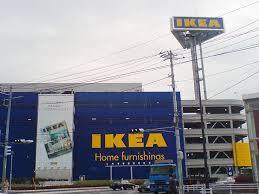 When I researched the story, there is obviously more to it than what is written in the book. This Forbes article gives the following background:
When I researched the story, there is obviously more to it than what is written in the book. This Forbes article gives the following background:
Kamprad started Ikea when he was just 16 (the name was officially registered in 1943) as a general mail-order firm. In 1952 he moved into mail-order furniture and the following year opened a showroom in lmhult. (The name is a combination of Kamprad’s own initials, plus the first letter of Elmtaryd, the family farm, and Agunnaryd.) He constantly tinkered with how the furniture was designed, to keep costs low.
In 1955 came a brilliant breakthrough: Trying to figure how to efficiently pack and ship a bulky, long-legged table, Gillis Lundgren, an early employee, later Ikea’s chief designer, hit upon the idea of taking the legs off and mailing them packed flat under the tabletop. Voil! Self-assembled furniture was born. It has been at the core of Ikea ever since.
In 1958 Kamprad began opening retail outlets, first in lmhult, then Norway (1963), Denmark (1969), Switzerland (1973) and Germany (1974, now Ikea’s largest market). Then came Canada (1976) and the Netherlands (1978). Later came Ikea’s second-and third-ranked markets, the U.K. (1987) and the U.S. (1985).
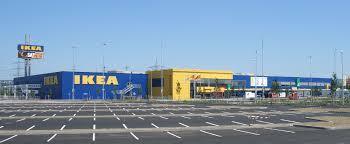 The article further goes on to state:
The article further goes on to state:
In the late 1950s and early 1960s, Sweden’s National Association of Furniture Dealers boycotted Ikea, threatening the country’s furniture makers that if they sold to Kamprad, they could forget about selling to the association’s membership. That led Kamprad to emphasize both in-house designs and sourcing production outside Sweden. In the end, the boycott collapsed.
Malcolm Gladwell gives the details of how Kamprad built an international network of suppliers by going behind the iron curtain to Poland. While it was not an easy job, it was well worthwhile to start a process which built IKEA into a global powerhouse it is today. With 139,000 employees and global revenue of Euros 28 Billions, there is certainly more than meets the eyes.
It will take an article of several pages to trace the development of IKEA from its humble origins stated above, to its current lofty position – perhaps a good case study for another edition of my book “The 5-Star Business Network“. However, it is quite clear that IKEA and its business network co-developed in lock-step with each other, leaving all those members of boycotting Sweden’s National Association of Furniture Dealers far behind.
“Vivek Sood is the world’s foremost authority on Global Supply Chains which are the commercial engines sitting deep within modern economies and driving them. He is a Chartered Financial Analyst (CFA), and has done courses from Harvard, MIT, and University of London. As the Managing Director of Global Supply Chain Group, he works as a consultant to CEOs and boards of directors of large global corporations, and helps them multiply profits by using the full power of global supply networks. He is also the author of “The 5-STAR Business Network”.
The post Does Your Business Build a Network, or Does Your Network Build Your Business appeared first on Global Supply Chain Group | Management And Strategy Consultants.
Does Your Business Build a Network, or Does Your Network Build Your Business

Imagine if you were a furniture seller, and suddenly your suppliers refused to supply furniture to you because they allege that you are selling at too low a price. And, when you went to another manufacturer, they refused too. In fact, it turns out that all manufacturers have decided to boycott your business because you are underselling every one of your competitors. What would you do?
Would you raise the prices to “fit in” with the market?
Would you quietly start preparing for “transitioning out” of the furniture business?
Would you build your own furniture factory?
Would you appeal to the government that such an “organised boycott” was illegal?
Would you find “a way” to break the boycott and find a “boycott breaker” supplier?
As you have probably guessed, this is not a hypothetical situation. This is exactly the situation faced by Ingvar Kamprad of IKEA. The story, related by Malcolm Gladwell in his book ‘David and Goliath’, is illustrative of the power of business networks.
 When I researched the story, there is obviously more to it than what is written in the book. This Forbes article gives the following background:
When I researched the story, there is obviously more to it than what is written in the book. This Forbes article gives the following background:
Kamprad started Ikea when he was just 16 (the name was officially registered in 1943) as a general mail-order firm. In 1952 he moved into mail-order furniture and the following year opened a showroom in lmhult. (The name is a combination of Kamprad’s own initials, plus the first letter of Elmtaryd, the family farm, and Agunnaryd.) He constantly tinkered with how the furniture was designed, to keep costs low.
In 1955 came a brilliant breakthrough: Trying to figure how to efficiently pack and ship a bulky, long-legged table, Gillis Lundgren, an early employee, later Ikea’s chief designer, hit upon the idea of taking the legs off and mailing them packed flat under the tabletop. Voil! Self-assembled furniture was born. It has been at the core of Ikea ever since.
In 1958 Kamprad began opening retail outlets, first in lmhult, then Norway (1963), Denmark (1969), Switzerland (1973) and Germany (1974, now Ikea’s largest market). Then came Canada (1976) and the Netherlands (1978). Later came Ikea’s second-and third-ranked markets, the U.K. (1987) and the U.S. (1985).

The article further goes on to state:
In the late 1950s and early 1960s, Sweden’s National Association of Furniture Dealers boycotted Ikea, threatening the country’s furniture makers that if they sold to Kamprad, they could forget about selling to the association’s membership. That led Kamprad to emphasize both in-house designs and sourcing production outside Sweden. In the end, the boycott collapsed.
Malcolm Gladwell gives the details of how Kamprad built an international network of suppliers by going behind the iron curtain to Poland. While it was not an easy job, it was well worthwhile to start a process which built IKEA into a global powerhouse it is today. With 139,000 employees and global revenue of Euros 28 Billions, there is certainly more than meets the eyes.
It will take an article of several pages to trace the development of IKEA from its humble origins stated above, to its current lofty position – perhaps a good case study for another edition of my book “The 5-Star Business Network“. However, it is quite clear that IKEA and its business network co-developed in lock-step with each other, leaving all those members of boycotting Sweden’s National Association of Furniture Dealers far behind.
Vivek Sood is the world’s foremost authority on Global Supply Chains which are the commercial engines sitting deep within modern economies and driving them. He is a Chartered Financial Analyst (CFA), and has done courses from Harvard, MIT, and University of London. As the Managing Director of Global Supply Chain Group, he works as a consultant to CEOs and boards of directors of large global corporations, and helps them multiply profits by using the full power of global supply networks. He is also the author of “The 5-STAR Business Network”.
The post Does Your Business Build a Network, or Does Your Network Build Your Business appeared first on Global Supply Chain Group.

